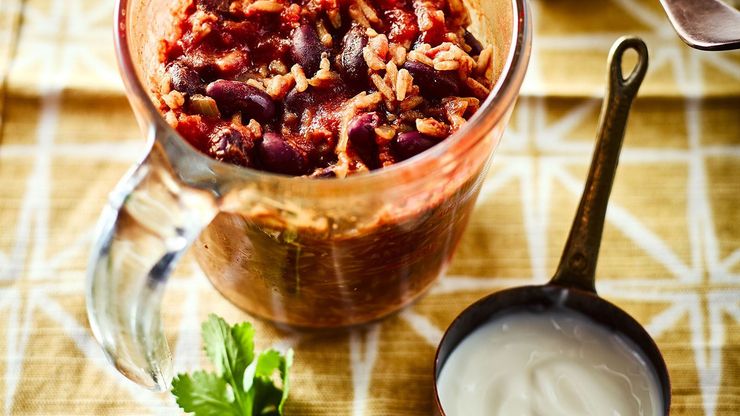Jack Monroe’s Christmas beet wellington recipe
This vegan wellington is a delicious Christmas dinner alternative to traditional turkey or goose that will impress vegans, vegetarians and meat-eaters alike.

This vegan wellington is a delicious Christmas dinner alternative to traditional turkey or goose that will impress vegans, vegetarians and meat-eaters alike.
Total time
Prep time
40
Amount
Serves four
Ingredients
- For the duxelles:
- 4 fat cloves of garlic
- 400g mixed mushrooms
- 1 onion
- 1 tsp mixed dried herbs
- 1 tbsp cooking oil
- 200g cooked chestnuts
- 100g spinach leaves
- For the beetroot:
- 4 large red beetroots
- 100ml red wine vinegar
- 100g white sugar
- 2 bay leaves (optional)
- For the crepes:
- A fistful of spinach leaves
- 250ml almond/cashew/soya milk
- 60g plain flour
- Grated nutmeg (optional)
- Oil for frying and greasing
- To finish:
- 320g ready-rolled puff pastry
- 1 tbsp cooking oil
- 1 tbsp almond/cashew/soya milk
- 1 tsp soy sauce
- Salt and black pepper to taste
- 3 tsp vegan gravy powder
Jack says: I have made many a vegetarian wellington, ranging from whole flat portobello mushrooms wrapped in spinach to a black bean and chestnut version, but my favourite by far is this beet wellington, and not just for its nomenclature. It requires a little care in the assembly process, but then so does a standard fillet beef wellington, and this keeps as close to the original as possible with the inclusion of a mushroom duxelles and a crepe layer. The duxelles provides a distinctive depth of flavour, and the crepe layer, although it may seem overly fancy, acts as a barrier between the vegetables and the pastry, keeping the former tender and the latter perfectly crisp. This may well be the best part of a morning’s work, but the end result is more than worth it.
1. First make the duxelles. Peel and chop the garlic and toss into a large frying pan or sauté pan. Slice the mushrooms and onion and add those too. Measure in the herbs, and the oil, and season with salt and pepper. Cook on a very low heat for 10 minutes on the smallest burner ring on your hob, to gently sweat the onion and garlic and soften the mushrooms. Remove from the heat and transfer to a small blender or food processor, along with the chestnuts and spinach. Blitz to a smooth, thick paste. Scrape every last drop into a small bowl, and chill in the fridge until needed.
2. Next, peel the beetroots – I wear a pair of Marigolds to do this, to stop the juices from staining my fingers. Drop them into a deep saucepan, and cover with water. Add the red wine vinegar, sugar, bay leaves, if using, and salt and pepper. Bring to the boil, then reduce to a simmer for 30 minutes, until tender. Remove the beetroots carefully with a slotted spoon and pop them in the fridge to chill along with the duxelles. Boil the liquid to reduce it by two-thirds, and set it to one side.
3. Finally, make the crepes, which form a layer between the beets and the pastry, to keep the beets tender and the pastry crisp. Blitz the spinach and ‘milk’ together to make a pale green liquid. Beat in the flour, making sure to eliminate any lumps – I admit to doing this in the blender as well, while it’s up and running, for speed and consistency. Season well with salt and pepper, and a little nutmeg if you have it.
4. Prepare four pieces of cling film on four side plates – a bit of a faff, but you’ll see why shortly – it’s good preparation for what you’re about to do next.
5. Heat a little oil in a frying pan. Pour around 60ml of the crepe liquid into the pan to form a thin layer, and cover if possible with a large lid or baking tray to trap the heat. Turn the heat down low and cook the crepe gently until bubbles form on the top surface, then gently slide out of the pan onto one of the pieces of cling film. Repeat three more times to make four crepes, each on its own little prep station.
6. Remove the mushroom and chestnut duxelles from the fridge, and divide it between each of the crepes. Spread it evenly almost to the edges of each one. Place a beetroot dead in the centre of each, and carefully wrap the crepe around it, pressing it together at the top with your fingers (which will be the bottom, eventually.) Wrap each in cling film to secure it, and return it to the fridge for an hour.
7. When the beetroot-duxelles-crepe parcel has chilled, remove the pastry from the fridge and cut into quarters. Preheat the oven to 200°C (fan 180°C/400°F/gas 6), and lightly grease a baking tray. Carefully unwrap one beetroot parcel and place, messy side up, in the centre of the pastry. Fold in two opposing corners, as you would wrap an awkwardly shaped present, and then the other two. Push the pastry in gently with your fingers, and turn the wellington over so the joined pastry is all at the bottom. Place on the baking tray, and repeat with the remaining three. Whisk together the oil, ‘milk’ and soy sauce in a small bowl. Brush each parcel with a little oil-milk-soy sauce mixture to glaze.
8. Bake in the centre of the preheated oven for 20 minutes, or until the pastry is puffed up, crisp and golden.
9. While the pastry heats, use the reserved beetroot and vinegar broth to make a gravy, by adding 500ml to the vegan gravy powder. At this stage of the day, you’ve done enough work to get away with cheating here!
10. Serve piping hot with the gravy, and veg of your choice.
